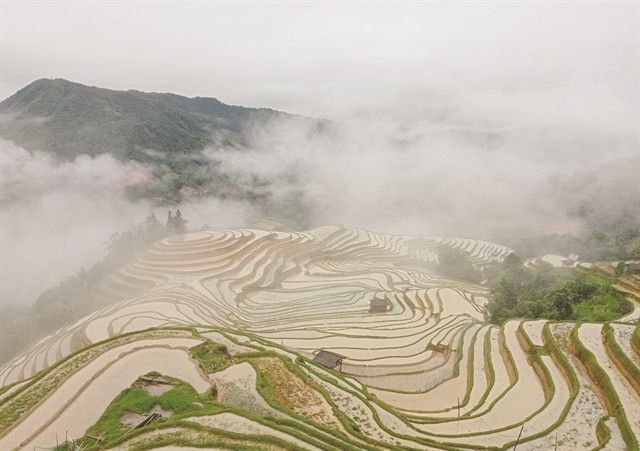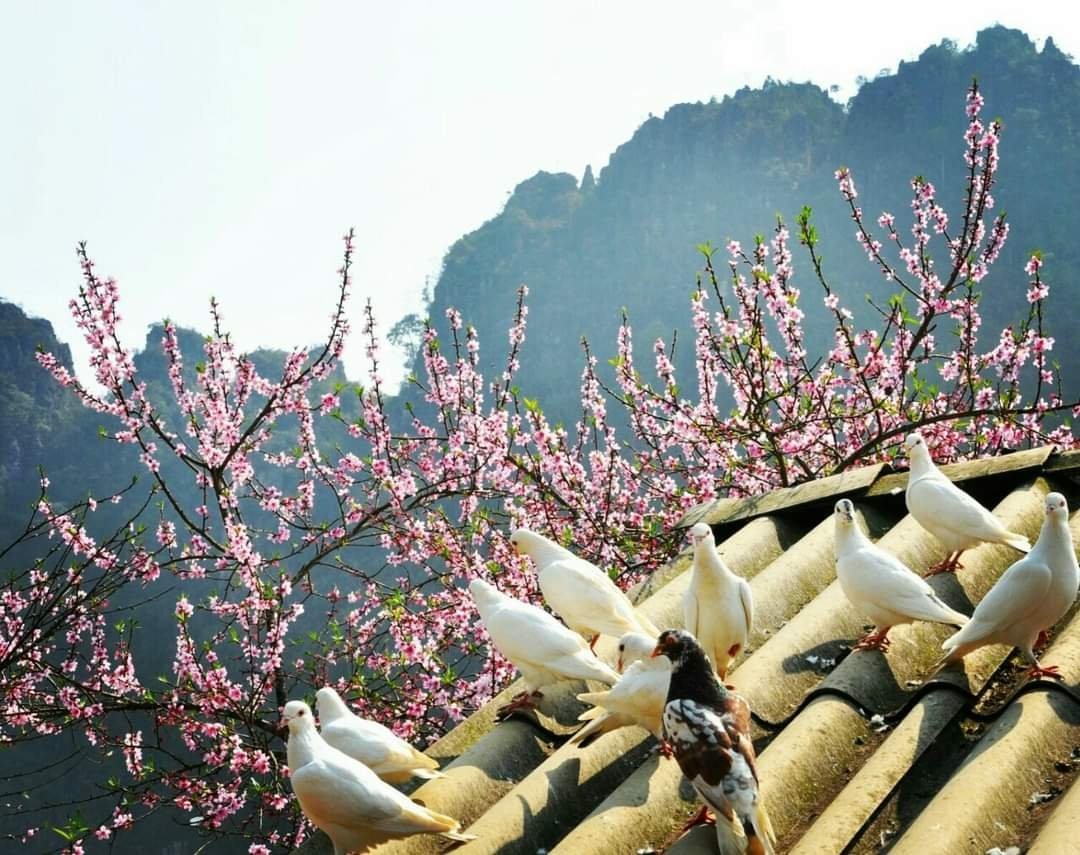
Ha Giang attracts visitors thanks to magnificent beauty
Latest
 |
| The terraced fields in Hoàng Su Phì, Ha Giang. (Source: VNS) |
Ranges of rugged rocky mountains, the narrow paths winding through hills up and down, and the golden rice terraced fields, all embrace lots of mysteries not yet fully discovered.
Ha Giang is an old land, home to more than 20 ethnic groups, the Mong, Tay, Dao, Nung, and Giay, who have their own traditional culture, lifestyle and customs, plus exciting festivals for visitors and researchers.
The region embraces many historical relics and landscapes, such as the Heaven Gate, the Quan Ba double mountains in Quan Ba District; the Mong King’s Vuong Palace, the Lung Cu National Flag Pole in Dong Van District; the Ma Pi Leng Pass in Meo Vac District; the Fairy Fall, the Windy Pass and the Nam Dan ancient stone ground in Xin Man District and the Quang Ngan mineral spring in Vi Xuyen District. They attract many visitors to come for fun or for research.
In 2010, the Dong Van Karst Plateau in Dong Van District was officially recognised by UNESCO as a global karst geo-park, the first of its kind in Vietnam and the second in Southeast Asia (after the Langkawi Park in Malaysia).
In 2012, the terraced rice fields in Hoang Su Phi District were listed among Vietnam’s national relics, and later in 2015 it became a national intangible cultural heritage. With its natural resources, Ha Giang Province obviously has many tourist sites of significant value.
Visitors to Ha Giang will be immersed in an atmosphere of wild and magnificent beauty with ranges of rugged rocky mountains stretching far beyond the eye, the terraced rice fields looking like paintings which are shining with a golden colour during harvest time, or sparkling in water during field-watering time. Amid the up and down mountainous slopes are grounds of beautiful violet buckwheat flowers. Here and there are houses-on-stilts of the local ethnic residents resting so peacefully with cooking smoke from the kitchens covering the dark green mountains in the later afternoon.
The Dong Van Karst Plateau is located at the height of 1,000-1,600m above sea level, covering the four districts of Quan Ba, Yen Minh, Dong Van and MeoVac with a total area of over 2,300km2. According to researchers, the locality is one among the country’s special karst mountain regions, which holds historical imprints of the earth crust’s evolution lasting for millions of years.
 |
| Visitors to Ha Giang will be immersed in an atmosphere of wild and magnificent beauty. (Source: VNA) |
To fully enjoy the magnificent beauty of Dong Van Karst Plateau, visitors should take a trip by bus from Ha Giang along National Highway 4C for about 40km before they arrive in Quan Ba District. They would continue their trip upward to Yen Minh, Dong Van and Meo Vac districts. The total distance will be more than 150km, through winding mountainous paths full of challenges, but very exciting.
Along the way, visitors can contemplate the beauty of mountain ranges, one after another, with sharp rugged rocks pointing to the blue sky. They will discover many fascinating natural beautiful spots, including the Quan Ba Heaven Gate, which is 1,500m above sea level; the Can Ty Pass, which winds around mountain slopes, and especially the Ma Pi Leng Pass, considered one of the top-four high passes in Vietnam’s northwest region. Vast forests of pine trees whistling in the wind will please both eyes and ears.
The Dong Van Karst Plateau has terrains full of obstacles, and a temperate climate, which includes two different seasons, the rainy season lasting from May to October, and the dry season from November to April. The average temperature is around 24-280C. In winter it may fall to 5oC below zero, which is similar with that in western countries.
Beautiful all year round, however the Dong Van Karst Plateau shows off its beauty during the season of light violet buckwheat flowers from October-November, mostly in the fields in Pho La, Sung La, Lung Tao and Ma Le. When spring comes, yellow mustard flowers are blooming on the mountain slopes, and pink peach blossoms beside the old mossy house roofs. Their unique and magic beauty fascinate any visitors to the region.
In addition, visitors will have a chance to stay in the old palace of the former Mong King, which has been preserved through many historical ups and downs. Their car will drive on a road, named “A Road of Happiness”, built by young ethnic people, before they arrive at the Lung Cu Flag Pole, on its top the national flag flying high in the wind. The traditional culture and lifestyle of the local ethnic highlanders also attract many visitors, particularly researchers.
Besides the magnificent Dong Van Karst Plateau, Ha Giang Province has been known for its terraced rice fields, mostly in Hoang Su Phi District. It is said that the local terraced rice fields were built three to four centuries ago, mostly in the communes of Ban Luoc, San Sa Ho, Ban Phung, Ho Thau, Nam Ty and Thong Nguyen. They are among the country’s most popular beautiful spots and have been recognised as one of the national intangible heritages.
Every year, in late September and early October, the terraced rice fields in Hoang Su Phi become golden due to ripening paddies. The rice fields run around the mountain slopes, and ripened rice looks like golden carpets covering the mountain slopes. In the fields, ethnic Mong people are harvesting their rice. The scenery is so peaceful and romantic.
Meanwhile, in May and June, it is time to fill the terraced fields with water. The fields are sparkling, like a huge mirror shining with clouds and the sky reflected in it. The scenery is then extremely fanciful that seems to keep visitors staying longer.
With its advantages, in recent years Ha Giang has paid great attention to developing different forms of tours to attract more tourists to the province. A Village for Communal Culture and Tourism was built, which focused in developing homestay tours, and to date there are 29 such villages operating throughout the province while another 17 villages are under construction. These villages are mostly managed by the ethnic groups of Mong, Dao, Tay and Pa Then.
With its strong points and advantages, Ha Giang’s tourism sector is expected to further develop in the very near future, making the province become one among the country’s key localities in the northwest having strong tourism development due to its unique tourist attractions.

















